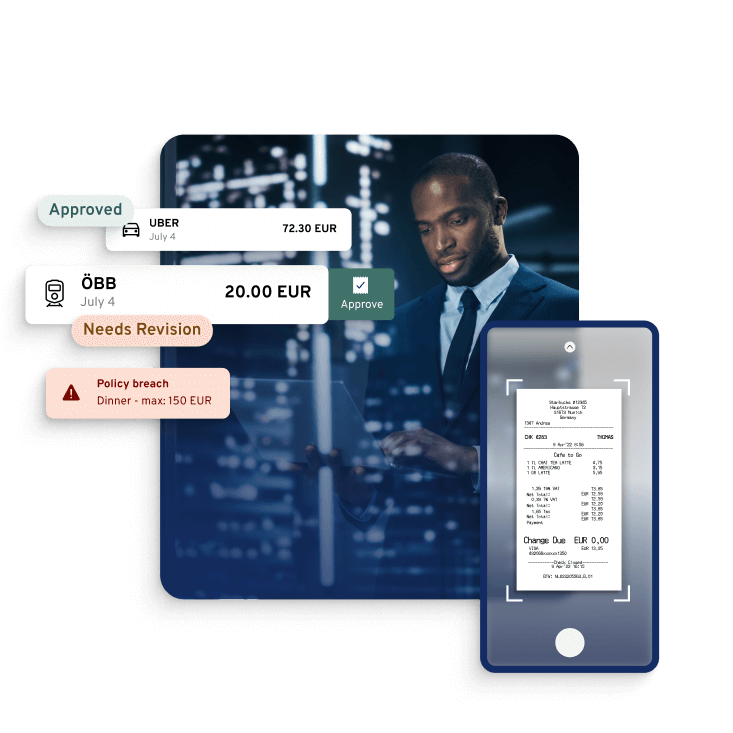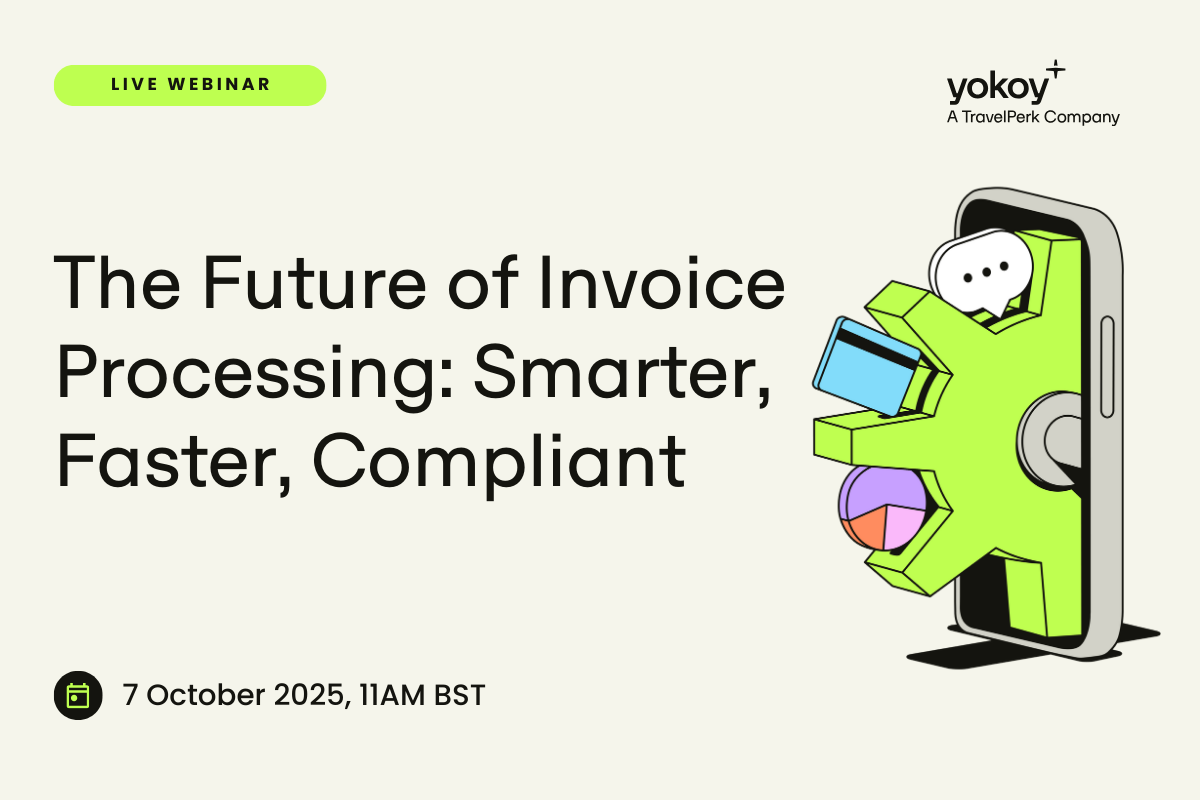
Imagine trying to steer a ship without a clear view of where it is—that’s similar to what traditional budgeting often feels like. Finance teams are caught wading through spreadsheets and outdated reports while finance leaders want to make the next decision. In a world where transactions happen in seconds, relying on manual processes to control budgets is like using a paper map in the age of GPS: These processes are slow, rigid, and prone to costly mistakes.
As companies grow, so does the complexity of managing spending across teams, projects, and regions. Businesses want to move fast to catch opportunities that only appear and disappear overnight, and unexpected expenses surface without warning. Yet many CFOs are still playing catch-up, armed with tools like Excel that can’t keep pace. The result can be missed opportunities to save, budget overruns, and the frustration of “How did this happen?”.
But what if budget oversight didn’t have to be a constant scramble? Artificial intelligence (AI) is the game-changer transforming how businesses monitor and manage their budgets. By harnessing real-time data, machine learning algorithms, and predictive analytics, AI takes budgeting from guesswork to strategic control. Instead of reacting to issues after the fact, AI-driven solutions give finance teams the power to forecast spending trends, detect anomalies, and automate policy enforcement.
How can AI-powered automation revolutionise your budget oversight and help you regain control, improve accuracy, and make smarter decisions? Let’s find out!
Why traditional budget oversight falls short
For many organisations, the budgeting process remains a cycle of outdated tools and time-consuming manual work. Despite rapid data analytics and AI advances, most companies struggle to gain real-time spend visibility. This critical gap exposes businesses to unnecessary risks, overspending, and missed opportunities for cost optimisation.
One of the biggest challenges companies face is the inability to monitor spending. Without real-time insight into budget usage, finance teams often rely on already outdated reports by the time they’re done. When a budget overrun is discovered, the damage is done, and correcting course becomes an uphill battle. This lack of actionable insights also leaves stakeholders across the business flying blind, unable to make fast, informed decisions about resource allocation, financial planning, or adjusting to fluctuations in demand.
Traditional budget oversight often relies on spreadsheets, siloed datasets, and disconnected workflows, which demand countless hours of manual data entry and reconciliation. This approach is time-consuming and highly prone to human error—whether it’s a misplaced decimal, a duplicate entry, or a (unintended) policy violation. These mistakes can have serious consequences, from inaccurate financial data to poor budget planning. More importantly, manual processes force CFOs into a reactive stance, where issues are addressed only after they have already caused an impact.
In a fast-paced and unpredictable marketplace, traditional budgeting methods operating on static, inflexible rules can add to causing problems. As new initiatives arise and spending patterns shift, static budgets are slow to reflect these changes. For example, if a sudden spike in travel costs or marketing spend occurs, conventional tools often fail to flag this until the money is already gone. Without predictive analytics to detect emerging trends, businesses are left unprepared for cost fluctuations, limiting their ability to pivot when it matters most.
As businesses grow, managing spending across teams, projects, and regions becomes increasingly complex. What once worked for a small team quickly breaks down at scale, leaving gaps in oversight and allocation. Finance teams struggle to keep up with spending, enforcing policies, and aligning budgets with financial goals, making effective budget control impossible.
Blog article
Automated Expense Reporting: Simplify Expense Tracking and Maximize Compliance
Automated expense reporting helps you simplify expense tracking, enforce compliance, and streamline your expense management workflows. See how it works.

Lars Mangelsdorf,
Co-founder and CCO
How AI transforms budget oversight
AI redefines how businesses manage budgets—turning slow, manual processes into real-time, intelligent controls. From forecasting and policy enforcement to fraud detection, AI gives finance teams the tools to stay ahead of spending, not chase after it.
Real-time budget monitoring: AI-powered platforms deliver real-time visibility into spending, allowing finance teams and CFOs to track budgets as expenses happen. This empowers faster decision-making and agile resource allocation, reducing the risk of overspending.
Predictive spend forecasting: Leveraging machine learning and predictive analytics, AI models analyse historical data and live datasets to forecast future expenses accurately. This enables proactive budget planning, helping businesses anticipate fluctuations and align spending with financial goals.
Automated budget policy enforcement: AI-driven automation helps to enforce budget policies in real time, flagging or blocking non-compliant transactions before they occur. This ensures consistent rule application and prevents human error from undermining the budgeting process.
Fraud and anomaly detection: AI systems continuously analyse spending patterns using advanced algorithms to detect unusual transactions and potential fraud. By identifying real-time anomalies, businesses can act swiftly, reducing risk and improving compliance.
Expense categorisation: Artificial intelligence streamlines data analysis by automatically categorising expenses based on patterns and inputs, improving accuracy and enabling more apparent financial data for reporting and optimisation. This reduces the manual effort of sorting and labelling transactions — a time-consuming task in traditional workflows.
Practical use cases: AI-powered budget oversight in action
Artificial intelligence is no longer a concept of the future: It’s already reshaping how businesses manage their budgets. As companies grow and spending becomes more complex, AI-powered solutions deliver real-time visibility, dynamic control, and predictive insights that enable more intelligent decision-making.
Using machine learning algorithms and real-time data analysis, AI helps businesses move from reactive to proactive. Tools can spot issues before they escalate, automate tedious processes, and optimise spending without slowing teams down. Many practical scenarios show how AI-driven financial oversight works to manage spending more intelligently in the real world.
Scenario 1: Identifying overspending trends
Instead of waiting for end-of-month reports, AI tools monitor financial data continuously, spotting spending patterns that are trending beyond expectations. For instance, if travel or corporate card expenses suddenly spike, AI models detect these deviations immediately. This early warning system allows decision-makers to adjust, pause, or reallocate spending, preventing budget breaches.
Scenario 2: Categorising and pre-approving expenses
Manual expense categorisation is one of the most time-consuming and error-prone aspects of spend management. AI technology eliminates this pain point by using historical data and intelligent algorithms to automatically track expenses—whether office supplies, software subscriptions, or project costs. Beyond categorisation, AI can even pre-approve routine, policy-compliant expenses, reducing the need for manual intervention while still maintaining control. This ensures that employees can work efficiently and finance teams can trust that spending aligns with company policies and financial goals.
Scenario 3: Suggesting budget reallocations
Spotting where to shift funds isn’t always obvious. AI data analytics can assess real-time spending against business objectives, flag underused budgets, and identify where extra resources are needed. For example, if one project is under budget while another is struggling to meet demand, AI will recommend a reallocation that aligns with current initiatives and overall financial planning. This enables companies to use their resources better, supporting strategic goals without compromising budget control.
Of course, these examples highlight just a glimpse of what AI tools make possible. They streamline workflows, helping generate actionable insights that shape better financial outcomes.
Yokoy Expense
Manage expenses effortlessly
Streamline your expense management, simplify expense reporting, and prevent fraud with Yokoy’s AI-driven expense management solution.

How Yokoy's AI helps you keep track of your spending
Managing budgets with outdated, manual processes is like steering a fast-moving business while blindfolded. But Yokoy’s AI-powered platform is a game-changer, offering an intelligent, real-time solution that releases the blindfolds and gives your finance team control.
Automating budget tracking
Yokoy automates the entire budgeting process, giving your finance team the tools to track, manage, and enforce budgets. Instead of chasing after scattered spending data across departments, regions, and teams, Yokoy’s AI-powered system keeps a real-time pulse on company-wide spending, monitoring every transaction. Budgets can be checked against live expenses, and issues are automatically flagged for review. This proactive approach prevents budget breaches and eliminates the time-consuming end-of-month reconciliations. By automating tracking and enforcement, your finance team can focus on strategic initiatives and decision-making rather than fighting budget fires.
Spend classification
With thousands of transactions happening across an organisation, manual categorisation is inefficient and prone to mistakes. Yokoy makes sense of this complexity through fully automated spend classification, assigning each cost to the correct budget category. Whether employee expenses, supplier invoices, or corporate card payments, Yokoy’s AI analyses the data in real time, helping to ensure every transaction is correctly categorised and in line with company policies. Anomalies and out-of-policy expenses are flagged before they can lead to overspending or compliance issues. By eliminating human error and proactively identifying risks, your organisation gains tighter control over spending and a stronger foundation for achieving key financial goals.
Real-time analytics
With real-time analytics, Yokoy gives you instant visibility into how budgets perform across teams, projects, and regions. For example, you can access data showing your employees’ travel expenses on their corporate cards worldwide. These AI-powered insights help finance teams maintain daily control over spending and support more thoughtful decision-making. By analysing live financial data and comparing it with historical data, Yokoy’s AI can surface actionable insights and even predictive trends, guiding better future budget planning and resource allocation.
Next steps
Ready to move beyond static budgets and spreadsheets? Book a demo to see how Yokoy’s AI tools can transform your budget oversight. They give you real-time control, eliminate human error, and help you focus on the way forward!
In this article
See intelligent spend management in action
Book a demoRelated content
If you enjoyed this article, you might find the resources below useful.


